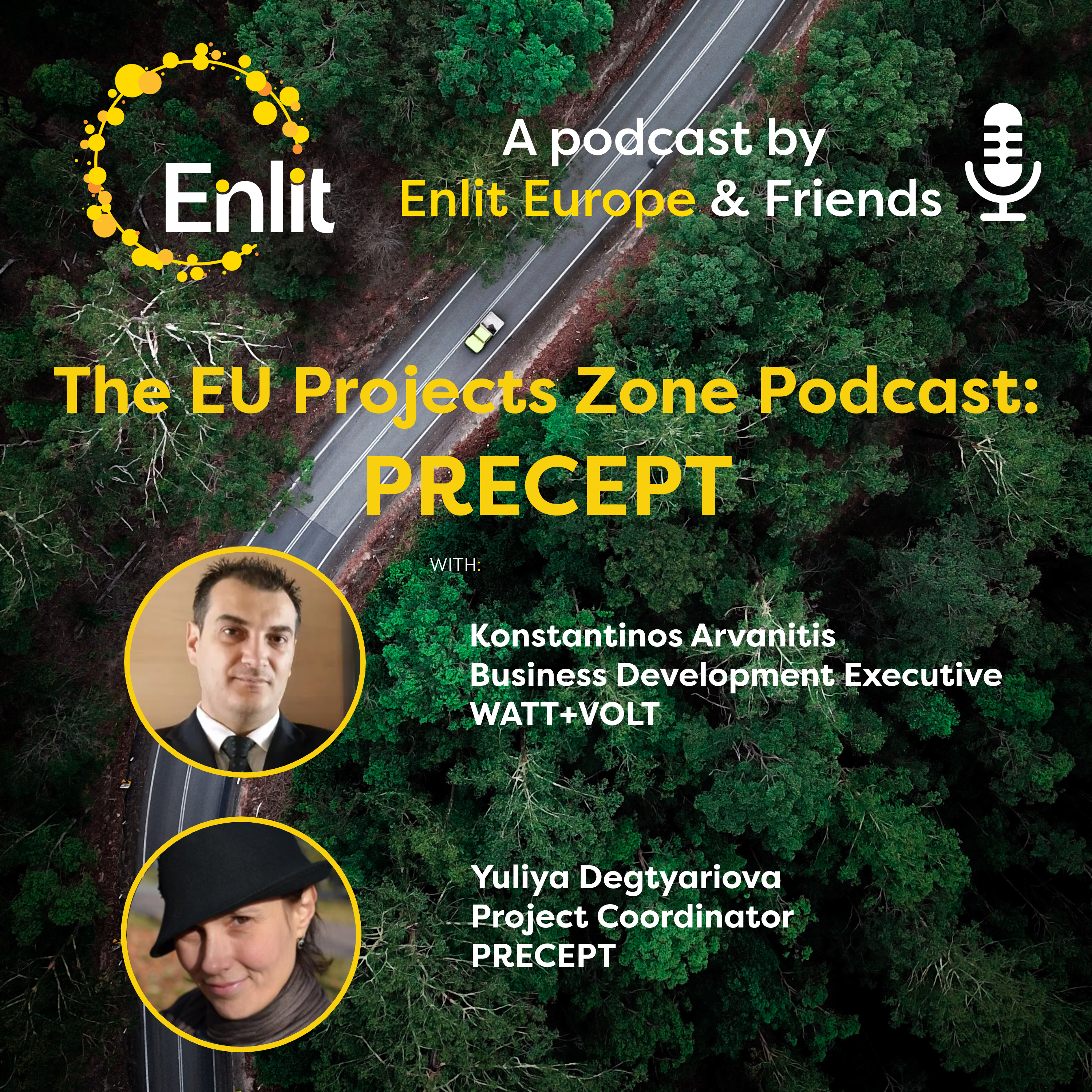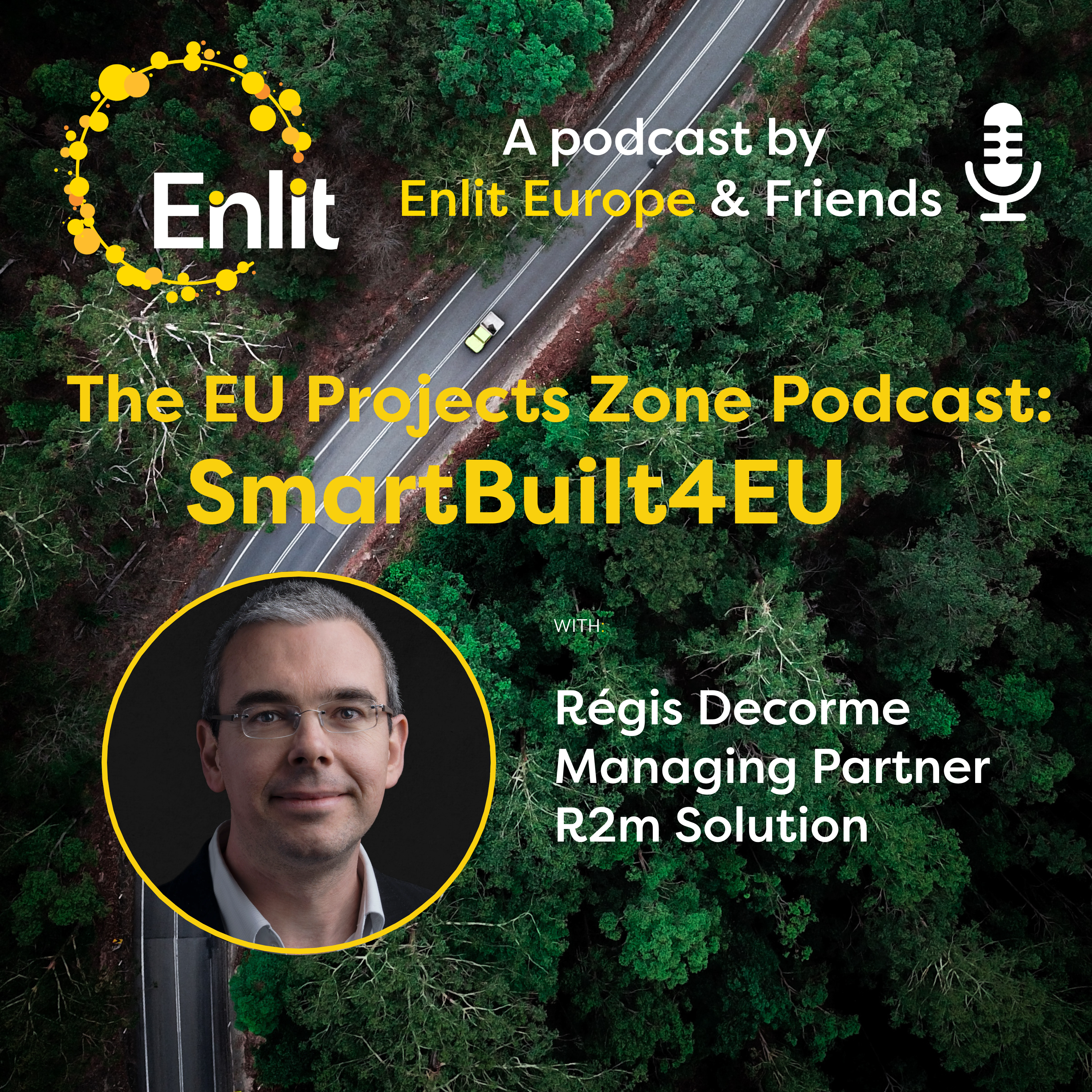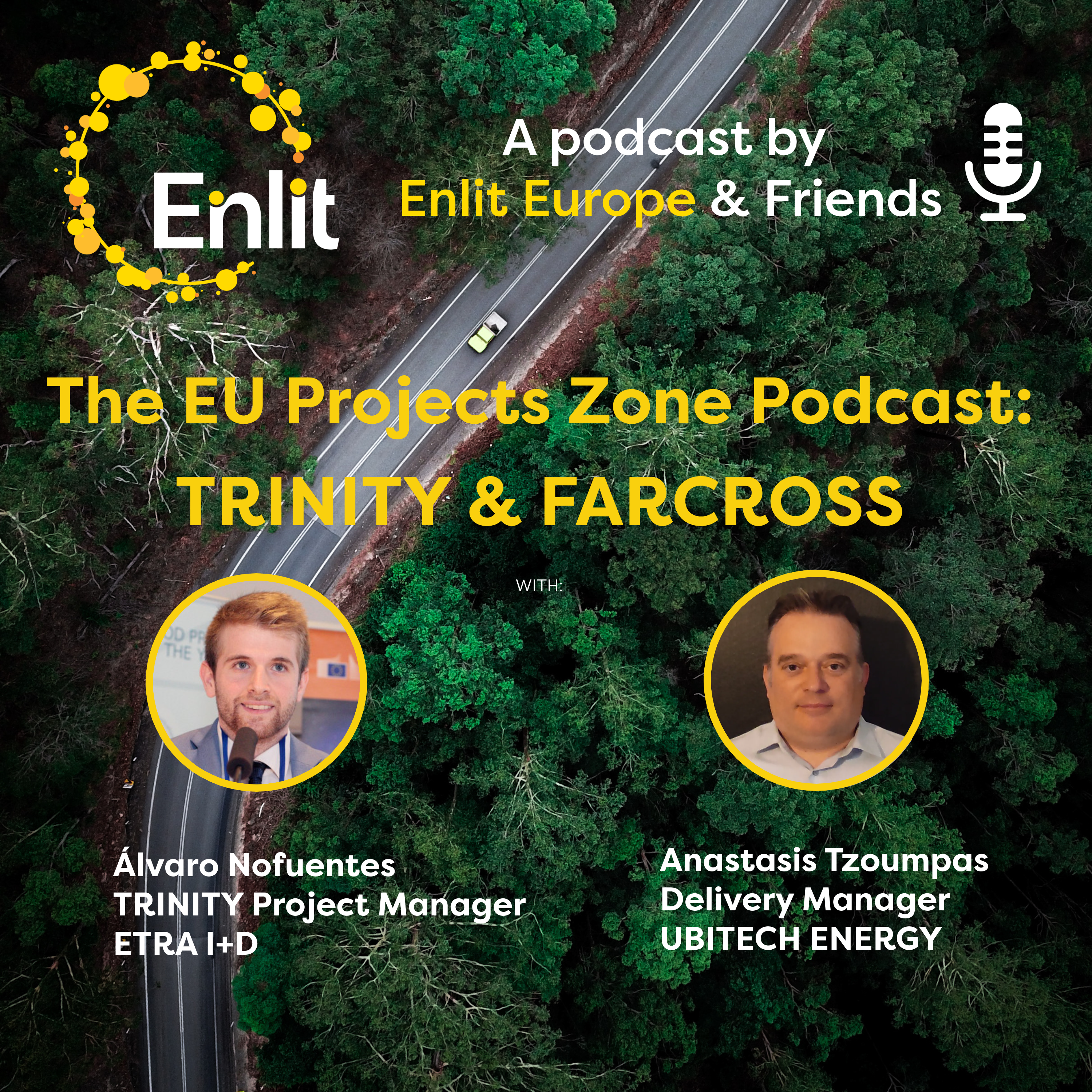Episode Transcript
[00:00:10] Speaker A: Welcome to the EU Energy Projects podcast, a podcast series from Enlighten France focusing on the clean energy transition for the European Union and the EU Commission funded energy projects that will help us achieve it. My name is Areti Daradimo. I am the editor of the EU Energy Projects podcast and your host.
[00:00:35] Speaker B: The growth of solar energy generation is an integral part of the energy transition, but finding sustainable solutions for photovoltaic panels that reach the end of their life cycle is also a growing challenge. The Fotorama project is paving the way for the recycling of millions of tons of pv waste. This project is developing a circular model to reuse materials like glass, aluminium, copper, silver and silicon from old solar panels.
The work of this Horizon 2020 project was recently recognised at the EU Sustainable Energy Week Innovation Awards.
We were at the event in Brussels and Areti spoke to Claire Agrafay, the EU project coordinator from the French Alternative energies and Atomic energy energy commission. The SEOA, the Seoul, plays a key role in the Fotorama project, including coordination and the technological development for pre industrial integration. Let's find out more.
[00:01:37] Speaker C: Claire, your project won an award at the European Sustainable Energy Week 2024. That's a prestigious award, especially for projects. What do you think made your project stand out?
[00:01:48] Speaker D: And I hope the topic, you know, we do develop recycling technology for pvp. So this is about the green transition and this is about to make the full circularity in the value chain. So, yeah, I hope it's the topic. And I wanted to give a warm thank you to the European Commission, to our agency, and also to the people for voting for our project.
[00:02:20] Speaker C: I would like to ask you to elaborate a little bit on photorama project for us and give us its most important aspects.
[00:02:28] Speaker D: So the Fotorama project, the main focus of the project is to implement a circular model within the photovoltaic value chain. And the second aspect that we, I would say on the technological development, we focus on the waste management and on the development of recycling technologies. This is research and development. So this is a lot of challenges and, you know, research and development, sometimes it works, sometimes it doesn't. What I can say is that in our project, in our team, we really work hard and together, most importantly, together, and we found out solutions and yeah, we are going forward to a successful model. But I wouldn't say that it was an easy way.
[00:03:18] Speaker C: Can you give me a couple of examples of, let's say, some major issues that you faced down the road?
[00:03:25] Speaker D: I could go very deep in the technical side, but I think it's more easy to understand that our project was kind of very challenging because it's many steps. We've developed several technologies that are actually, actually interrelated. It means that each step depends on the next one. And in that design, we had to make fit the output fraction from one step to another. Maybe it's important to explain you very rapidly as a principle. A pv device, a photovoltaic panel, is quite simple design. You have a multilayer sandwich that is surrounded by an aluminum frame and electric junction box, electric components. So the idea of our project is to disassemble properly each component to recover the materials without mixing them, meaning that we can get higher purity of each material. This is not what happened in the field today, because at industrial scale, you have mostly shredding, crushing process that makes the materials and you cannot recycle at the high value. We call that down cycling. Our purpose, our objective is to showcase a business model, a viable business model where we can recover high value material.
[00:05:08] Speaker A: Did you know that enlit has another podcast? The Energy Transitions podcast is a broad ranging bi weekly podcast about the people accelerating the energy transition in Europe and beyond. You can find it on Spotify, Apple or wherever you enjoy your podcasts.
So I see that one of the.
[00:05:30] Speaker C: Materials that you recycle, correct me if I'm wrong, of course, is silver.
[00:05:34] Speaker D: Yes.
[00:05:34] Speaker C: How difficult or easy is that? And how much does it cost? And is it cost effective, let's say, because silver is a very expensive material.
[00:05:44] Speaker D: Yes, it is. And this is one of our targets. You have to know that I was talking about the current practices. Those current practices, they don't recover silver, they don't recover silicon, and they. Yeah. So in our projects, as mentioned, the idea is to separate. So when we open, because this is a multilayer sandwich. When we open the sandwich, we can get access to the solar cells. And after the delamination, after a delamination process, the separation process, we can get access to the solar cells. And when we have access to the solar cell, we can recover silver, but using environmentally friendly processes. Because today, again, at industrial scale, you have mostly hydrometallurgical, which kind of process, which is. Yeah, which is not all good for our planet. So we try to. We've developed a process that enables the recovery of silver using green solvents. And you were asking about the business case because it's very important. And this was part of our challenge, and maybe it's. It was one of the biggest challenge of our project. It was first to make work the technologies and. Yeah, to make them as a viable business case. As a whole. And I mean, I cannot.
Well, because we are three quarters of the project, I'm actually very excited today we have each unit that were brought in Germany and we are setting up the pilot line with all of our six, seven technologies. In one month or two we'll run for six months a demonstration with over 100 tons of photovoltaic waste and we will give more answers. But we've worked all along the way to make this business case viable and so we are very confident that we can open up opportunities for high value recycling to showcase and to demonstrate that it's possible.
[00:08:03] Speaker C: And do you think that that will be possible throughout Europe? So geographically speaking in the north, in the south, west, east or there will be problems related first of all to policy and laws and regulations that are different in every european country and second to I don't know how open the governments, the companies, the people in the end are.
[00:08:27] Speaker D: Of course I think we can and this is why we have to show that it works. So, you know, in Europe there is one directive, the Wii directive, where the photovoltaic panels as a waste are included in. And you know, this directive is for all the member states. So even though it might be a bit different in the, in different parts of Europe, I mean the great progress and as a precursor, Europe has made mandatory, you know, the recycling of photovoltaic panels. But I don't see there will be issues on the way. But I think it's possible. And the idea is again to duplicate this model through Europe and over the world, of course. And besides that, I would like to tell also that this circularity as a model because one of the issue that we've seen and when we've set up the design of the framework of the project was, you know, that the manufacturer in a value chain, whatever the component, the product, whatever we talk about, you know, the manufacturing side and the recycling side, there are two different industries that they don't work together. And you know, the idea was to bridge, to create dialogue. And I think, you know, besides duplicating our model, the idea also is to make an example, an example for other fields with, you know, Broadview too, as I said before, that we solar energy, you know, is kind of at the very front today of the climate fight. And I said that we should be exemplary. And our project was also to make a concept, the circular model, a reality. But at the very first it's about making experience in the field from concept to the field.
[00:10:32] Speaker C: Exactly. Creating, let's say a role model perhaps for other others to follow.
But here's the thing. There is this new act, relatively new act that the commission has implemented, the raw material act, which in a way also applies to you. Right. Because you do deal with raw material materials, even if they are recycled. How do you cope with that? Because there are some very specific mechanisms and some do's and don'ts that maybe apply to you or nothing.
[00:11:02] Speaker D: It is. And I think this art will support our field more than anything. This is a very good start. We have, you know, some of the critical raw material that belong to the list of the critical strategic raw materials. And that for sure, this is a real support for us. But I also want to tell that, you know, even if it's not on the list, some of the materials are valuable. You know, like we have more than 70% in weight of glass, and it looks easy to recycle glass, but it's not. It's not. You already have contamination or things that, you know, avoid to go to the upcycling field or, you know, this will be downcycled or not recycled or landfill or. Yeah, whatever. But it's also very important.
[00:11:57] Speaker C: Yes, and it's also important to be environmentally friendly and within the right, ethical, let's say, measures. However, would this impede a little bit our competitiveness? So you have to follow rules. Your project has to comply to environmental rules, to ethical rules that we have here in Europe. Your competitors in other continents, in other countries, perhaps do not.
I mean, I know the answer, but I still have to have to ask you, is that a problem?
[00:12:34] Speaker D: I would say that waste management and recycling is a different field, you know, because, okay, most of our product, most of the pv panels, they are coming from Asia. Yeah, but I mean, the waste, they are on the ground. They are on the european ground. So we will have, whatever happens, we will have to deal with it. So it means that, you know, this is not about competition. Recycling is a bit different. We also have a business and it's happening all over the world. But what I would say is that now the, I mean, the priority is to make an efficient system, an efficient model in Europe. And for that, yeah, I mean, you can only focus on the economic side and the benefits in our project and in our concepts, it was to. Yeah, to make a wall, a model as a wall with, you know, only environmental friendly technology.
[00:13:41] Speaker A: If you had a magic wand and.
[00:13:43] Speaker C: You could change something that has to do with the project, of course, what would that be? Just only one.
[00:13:50] Speaker D: So if I had one wish after this project is awareness of we can do high value recycling, what we call upcycling, that it can become more than a good practice. Just the next practice in the next decade.
[00:14:12] Speaker C: Perfect. Thank you so very much.
[00:14:14] Speaker A: You've been listening to the EU Energy Projects podcast, a podcast brought to you by enlit and friends. You can find us on Spotify, Apple, and the Enlit World website. Just hit subscribe and you can access our other episodes too. I'm Areetti Darademo. Thank you for joining us.
[00:14:33] Speaker D: Our channel.




